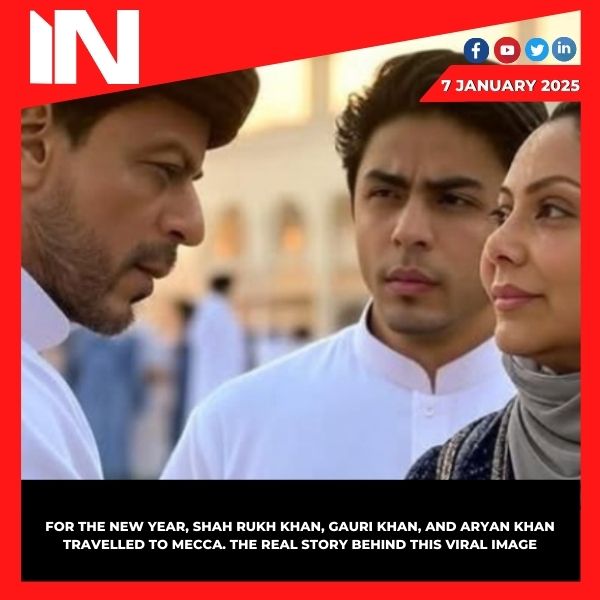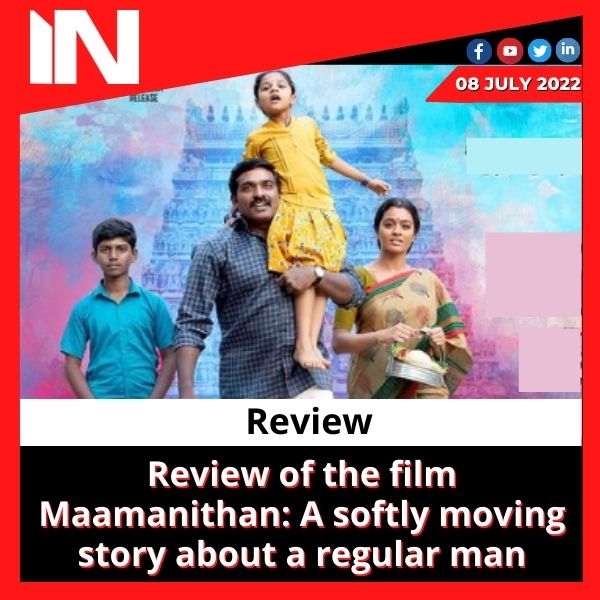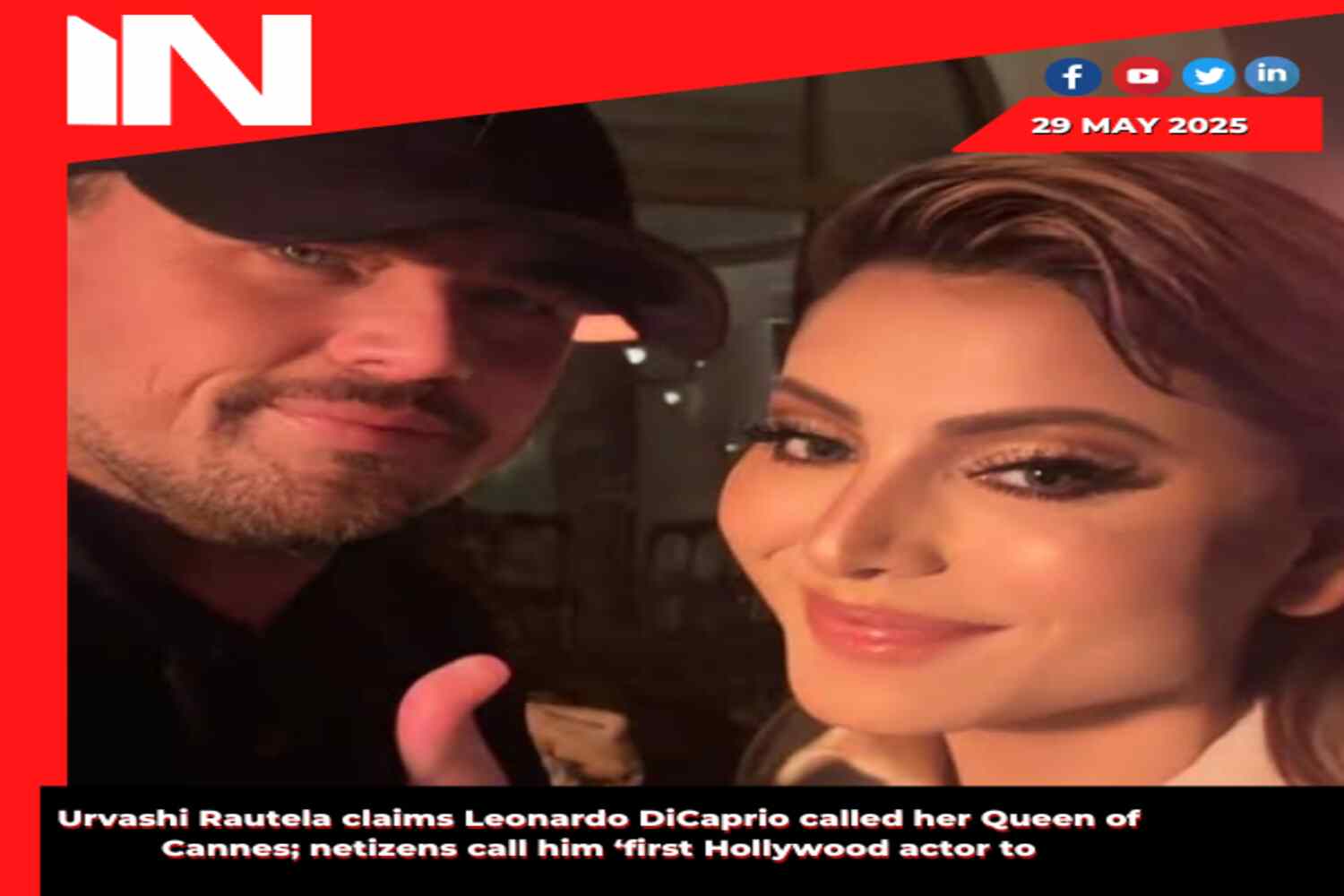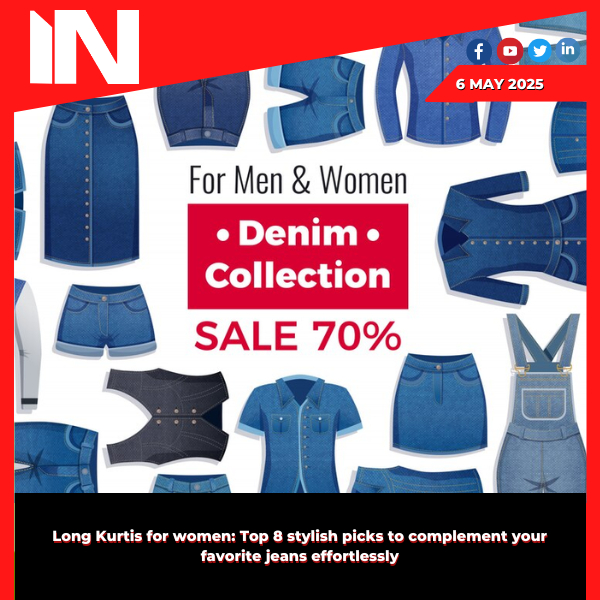Bollywood
A Story About Madan Mohan
Published
3 years agoon
By
Digital Team
Madan Mohan Kohli (25 June 1924 – 14 July 1975), better known as Madan Mohan, was an Indian music director of the 1950s, 1960s, and 1970s. He is considered one of the most melodious and skilled music directors of the Hindi film industry. He is particularly remembered for the immortal ghazals he composed for Hindi films. Some of his best works are with singers Lata Mangeshkar, Mohammed Rafi and Talat Mahmood.
Early years
Born on 25 June 1924, at Baghdad where his father Rai Bahadur Chunilal Kohli was working as an Accountant General with the Iraqi Police forces, Madan Mohan spent the early years of his life in the Middle East. After 1932, his family returned to their home town of Chakwal, then in Jhelum district of Punjab, British India. He was left in the care of a grandparent while his father went to Bombay to seek business opportunities. He attended local school in Lahore for the next few years. During his stay at Lahore, he learnt the basics of classical music from one Kartar Singh for a very short period, however he never received any formal training in music. Some time later, his family moved to Mumbai where he completed his Senior Cambridge from St. Mary’s School in Byculla Mumbai. In Mumbai, at the age of 11 years, he started performing in children’s programmes broadcast by All India Radio. At age 17, he attended the Colonel Brown Cambridge School in Dehradun where he completed a year’s training.
Career
He joined the Army as a Second Lieutenant in the year 1943. He served there for two years until end of World War II, when he left the Army and returned to Mumbai to pursue his musical interests. In 1946, he joined the All India Radio, Lucknow as Programme Assistant, where he came in contact with various artists such as Ustad Faiyaz Khan, Ustad Ali Akbar Khan, Begum Akhtar, and Talat Mahmood. During these days he would also compose music for programmes to be broadcast on All India Radio. In 1947, he was transferred to All India Radio, Delhi where he worked for a short period. He was very fond of singing, and so in 1947 he got his first chance to record two ghazals penned by Behzad Lucknawi, Aane Laga Hai Koi Nazar Jalwa Gar Mujhe and Is Raaz Ko Duniya Jaanti Hai. Soon after, in 1948 he recorded two more private ghazals penned by Deewan Sharar, Wo Aaye To Mahfil Mein Ithlaate Huye Aaye and Duniya Mujhe Kahti Hai Ke Main Tujhko Bhoolaa Doon. In 1948, he got his first opportunity to sing a film duet Pinjare Mein Bulbul Bole and Mera Chhotasa Dil Dole with Lata Mangeshkar under composer Ghulam Haider (composer) for the film Shaheed, though these songs were never released or used in the film. Between 1946 and 1948, he assisted music composers S.D. Burman for Do Bhai, and Shyam Sundar in Actress.
Music director
He scored his first big break with the film Aankhen in 1950, which marked the beginning of a long lasting collaboration with Mohammed Rafi, his next film was Adaa which saw the beginning of a long lasting collaboration with Lata Mangeshkar; both would go on to sing for many of his films. Two of his composed songs for Sharabi – “Sawan ke maheeney mein” and “Kabhi na Kabhi koi na koi toh aayega”, both filmed for Dev Anand are among the most well known renditions of Mohammed Rafi. In addition, his other compositions like “Wo Chup Rahen To” from the film Jahan Ara (1964) and “Maine Rang Li Aaj Chunariya” from Dulhan Ek Raat Ki (1966) are two similar examples. Madan was also able to write songs for male singers such as Talat Mahmood (Phir wahi Shaam, wahi gham, wahi tanhaayee hai, Main Teri Nazar Ka Suroor Hoon and Teri Aankh Ke Aansoo from Jahan Ara, and Meri Yaad Mein Tum Na from Madhosh) and Mohammed Rafi (Ek Haseen Shaam Ko from Dulhan Ek Raat Ki, Kisi Ki Yaad Mein from Jahan Ara, Main Nigahen Tere Chehere Se from Aap Ki Parchaiyian, Aap Ke Pehlun Mein Aakar Ro Diye from Mera Saaya, Ye Duniya Ye Mehfil Mere Kaam Ki Nahin from Heer Ranjha, Tere Dar Pe Aayaa Hoon from Laila-Majnu, the all-time haunting Meri Awaaz Suno and Tumhare Zulf Ke Sayen from Naunihal, Teri Aankhon Ke Siva Duniya Mein from Chiraag as well. Madan did not usually employ Kishore Kumar. Nonetheless their partnership created songs as well; in this category fall songs such as Simti Si, Sharmai Si from Parwana, Zaroorat Hai, Zaroorat Hai from Manmauji, the title song from Ek Muthi Aasman, Mera Naam Abdul Rehman from Bhai Bhai, and Aai Hasino, Naazanino from Chacha Zindabad. Madan often collaborated with lyricists Raja Mehdi Ali Khan, Kaifi Azmi, and Rajinder Krishan, Sahir Ludhianvi and Majrooh Sultanpuri for his movies.
In 1957 he came out with a film named Dekh Kabira Roya in which the legendary singer Manna Dey gave his voice to the melodious Kaun Aaya Mere Man Ke Dwaare and unforgettable numbers like Tum Bin Jeevan Kaisa Jeevan in the film Bawarchi. In addition to that, he had Lata sing Tu Pyaar Kare Ya Thukraaye and Meri Veena Tum Bin Roye numbers, and he used Talat Mahmood for the song Hum Se Aaya Na Gaya in the same movie. Once in an interview Manna Dey recalled that Madan Mohan asked him to take special care when singing Kaun Aaya Mere Man Ke Dwaare.
A film scored by Madan was Chetan Anand’s Haqeeqat (1964), starring Balraj Sahni and Dharmendra and based on the Sino-Indian War of 1962. In it, he used Rafi, who sang numbers like Kar chale hum fida, Main Yeh Soch Kar. Lata was used for the song Zara Si Aahat Hoti Hai and the unscreened ” Khelo na mere dilse”. And the same film saw Rafi, Talat, Manna Dey, and Bhupendra singing Hoke Majboor Mujhe Usne Bhulaya Hoga. Bhupendra appeared on the screen as well for the first time, much before he established himself as a playback singer. This song is also the only song in which four top-rated male playback singers have put voices together in a song. In 1966, he again paired with Lata Mangeshkar for Mera Saaya.
Madan Mohan’s venture was Raj Khosla’s version of “Woman in White”, titled Woh Kaun Thi?. This film has three Lata solos (‘Naina barse rim jhim rim jhim’, ‘Lag ja gale’ and ‘Jo humne daastaan apni sunayee’) and a Lata duet.
The late fifties, sixties and the early seventies were the most productive period in Madan Mohan’s career. His songs from those decades include compositions for films like Adalat, Anpadh, Dulhan ek raat ki, Mera Saya, Dastak, Hanste Zakhm, Heer Raanjha, Maharaja, and Mausam, among many others. His second last bow was for a film released five years after his death, Chalbaaz. In 1970, during the changing times of western music he gave music based on ragas for Rajinder Singh Bedi’s Dastak and won his only 1971 National Film Award for Best Music Direction. Its songs sung by Lata Mangeshkar are still considered her finest.
His legacy wouldn’t be complete without mentioning the ghazal he composed for the movie “Dil Ki Rahein” – “Rasm-e-ulfat ko nibhaein to nibhaein kaise”. The shayar(lyricist) for the ghazal was Naqsh Lallayalpuri and it was sung by Lata Mangeshkar. It is considered one of the best songs sung by Lata Mangeshkar, ever.
Madan Mohan’s son Sanjeev Kohli recreated 11 of his late father’s unused compositions for the soundtrack of the 2004 Yash Chopra film Veer-Zaara. Later on, Kohli brought out an album “Tere Baghair” which contains some of Madan Mohan’s songs.
You may like
-


Is a Sania Mirza biopic in the works? She reveals: Individuals have been conversing…
-


For the New Year, Shah Rukh Khan, Gauri Khan, and Aryan Khan travelled to Mecca. The real story behind this viral image
-


Viduthalai Part 2 movie review: Vijay Sethupathi shines in a highly sermonising story
-


Fauji 2: Shah Rukh Khan’s iconic 1989 series to be rebooted with Vikas Jain, Gauahar Khan.
-
.jpg)
.jpg)
Only actor to play both Lord Rama and Ravana had temples built for him, is still worshipped in parts of India
-


Review of the film Maamanithan: A softly moving story about a regular man
Kesari Chapter 2
Kesari Chapter 2: Accidentally, Akshay Kumar’s drama in a courtroom reveals Bollywood’s manejo de sexual misconduct.
Published
1 week agoon
June 19, 2025By
India.jpg)
Scene Post-Credits: Akshay Kumar’s Kesari Chapter 2 ignora la ironía de afirmar libre discurso y a la vez propagar falsedades.
Hace unos años, Karan Johar debutó bajo el estandarte de Dharmatic Entertainment con una película de Netflix titulada Guilty. It remains inolvidable por dos motivos; en primer lugar, Kiara Advani shines in it, and en segundo lugar, probably is the única ocasión en que Bollywood has confronted directly the #MeToo movement. Guilty, que hizo un eficaz uso de la influencia Rashomon, concluyó con una titulación acerca de Bollywood having ignorado las denuncias efectuadas contra some of sus más destacados personajes. Years después, their presuntos delitos son esencialmente olvidados.
The financial package aims to address key components of Amaravati’s development blueprint, especially the construction of the new Secretariat, which will serve as the administrative heart of Andhra Pradesh. Alongside this, a substantial portion of the funds will go towards housing projects for government employees, ensuring that the civil services infrastructure is strengthened by a sound residential ecosystem. This development also signifies the Centre’s commitment to fulfilling its promises made under the Andhra Pradesh Reorganisation Act, which had set the foundation for capital development following the bifurcation of the state in 2014.
Experts suggest that this funding could be a catalyst for broader economic activities in the region. Real estate developers, contractors, architects, and engineering firms are likely to benefit from the sudden inflow of capital into the Amaravati region. At the same time, local communities may experience job creation, increased land value, and improved access to basic infrastructure. The Secretariat complex is expected to be designed using modern, eco-friendly architectural principles that reflect both functionality and sustainability. This aligns with the government’s push towards green infrastructure and smart urban development.
The housing segment of the project is particularly significant, as it seeks to provide quality residential facilities for thousands of government employees, including IAS officers, clerks, and various department workers. The emphasis on affordable, durable, and well-planned housing reflects the state’s aim to create a livable, inclusive urban zone that caters not only to top officials but also to the working-class employees who keep the bureaucracy functioning. Furthermore, public infrastructure such as roads, sewage systems, and green spaces will be integrated into the broader project, ensuring holistic development.
This funding announcement has received praise across political and social spectrums. Chief Minister Y. S. Jagan Mohan Reddy has welcomed the move, stating that it demonstrates the Centre’s seriousness in supporting Andhra Pradesh’s capital vision. Civic groups and residents in the Amaravati region have also expressed optimism, noting that central support could accelerate development timelines and restore investor confidence. Political analysts interpret this development as a sign of improving Centre-State relations, which could further facilitate cooperative federalism in India.
With the Secretariat and housing construction expected to create a domino effect, the state’s capital region may also witness growth in education, healthcare, retail, and tourism sectors. Universities, hospitals, hotels, and commercial complexes could emerge around these government hubs, mirroring the growth patterns seen in other capital cities like Chandigarh and Naya Raipur. Additionally, the connectivity infrastructure linking Amaravati to major cities such as Vijayawada and Guntur is likely to receive upgrades, further integrating the region into national development corridors.
Investors and business chambers have lauded the move as a welcome step in re-establishing Amaravati’s identity as a growth engine for southern India. Real estate consultants expect a rise in property prices and new project launches, particularly in sectors close to the Secretariat complex. This announcement is also expected to attract global attention from infrastructure investment firms looking for government-backed, long-term development opportunities in India.
While the funding is substantial, urban planners caution that proper implementation, transparency, and timely execution will be key to ensuring the vision materializes on the ground. Lessons from stalled capital projects in other states highlight the importance of rigorous planning, public consultation, and sustainability assessment. As Amaravati embarks on this renewed path, attention must also be paid to environmental impacts, especially given the region’s proximity to the Krishna River and its agricultural importance.
The ₹2,787 crore package is being disbursed under central schemes that support state-level capital development and housing missions. These schemes typically involve conditional monitoring, which will ensure that the state government submits timely progress reports and utilizes the funds strictly for intended purposes. Independent monitoring bodies may also be roped in to oversee compliance and financial accountability.
This landmark approval also revives public interest in Amaravati’s original master plan, which had envisioned a futuristic, riverfront capital city with extensive greenery, high-speed transit systems, and global-standard public institutions. Although the original plan had seen setbacks due to policy shifts, financial hurdles, and legal challenges, the new central funding breathes life into core aspects of the vision. Local architects and urban designers are hopeful that this new momentum will help realize parts of that original dream in a practical, phased manner.
The Secretariat will likely become the nerve center of state administration, housing critical departments such as Home, Finance, Revenue, and Education. A centralized and well-connected administrative center will improve government efficiency, reduce inter-departmental delays, and enable citizens to access services more seamlessly. Digitization and automation are expected to be key features of the new Secretariat, aligning with India’s broader push for e-governance.
Likewise, the housing projects are being planned to ensure high standards of safety, sustainability, and quality of life. They are expected to include community facilities such as parks, schools, healthcare centers, and shopping areas. By creating a livable zone around the Secretariat, the government aims to prevent the rise of unplanned slums or commuting chaos, often seen in older administrative centers.
This announcement has come at a time when India’s urbanization story is accelerating rapidly. With a growing focus on smart cities, digital infrastructure, and sustainable living, Amaravati could emerge as a case study in capital planning for new-age governance. The region’s location, sandwiched between Vijayawada and Guntur, gives it a strategic advantage in terms of logistics, resources, and human capital.
As the capital development narrative gains momentum, local stakeholders—including farmers who had initially pooled land under the Land Pooling Scheme—are once again in the spotlight. Their expectations are high, having waited nearly a decade for meaningful progress.
With the central government’s financial commitment now public, many hope that previously promised infrastructure, compensation, and returnable plots will finally see action. This resurgence of funding may also help heal some of the political and social fractures that emerged during the stalled phases of Amaravati’s development.
In parallel, government engineers and planning agencies are expected to revalidate and update architectural blueprints and structural plans, ensuring alignment with today’s construction norms and sustainability standards. The reactivation of tenders, selection of contractors, and onboarding of construction workers is expected to begin swiftly.
This will likely contribute to local employment generation, especially in the sectors of cement, steel, logistics, labor, and equipment rental. Regional construction suppliers are preparing for increased demand, which could revitalize the local industrial economy in the short term.
From a political perspective, the ₹2,787 crore fund allocation reflects a strategic decision by the central government to restore confidence among Andhra Pradesh residents. With upcoming elections on the horizon, the revival of Amaravati is being perceived as a vote-catching move that aligns national interests with regional aspirations.
Observers believe this step may soften tensions that existed between the ruling party in the state and the central leadership, fostering more productive dialogue and cooperation.
Moreover, the news has caught the attention of think tanks and urban policy institutions. Organizations such as the National Institute of Urban Affairs (NIUA) and Centre for Science and Environment (CSE) have expressed interest in studying Amaravati’s development to assess how large-scale capital cities can be planned and executed with citizen-first, eco-conscious design principles. If the Secretariat and housing components are executed as per plan, Amaravati may once again be held up as a model of urban resilience and inclusive governance.
Local media reports indicate that the government is also considering allocating a portion of the funds for building roads, drainage systems, and other physical infrastructure to connect the Secretariat and housing colonies to nearby townships and services.
This integrated approach will help reduce travel times, cut pollution, and ensure that the capital’s core functions remain accessible to people across socio-economic classes. Early plans show promise for the development of high-speed transit links, feeder bus stations, and walkable pathways.
Notably, Amaravati’s vision aligns well with the objectives of the National Infrastructure Pipeline (NIP) and Gati Shakti Mission—two of the Centre’s flagship programs aimed at boosting multi-modal connectivity and economic productivity.
By channeling ₹2,787 crore into Amaravati, the Centre is also underscoring its focus on south India’s urban growth and capital infrastructure development, which had lagged behind other regions in terms of central funding and attention.
Educational institutions in and around Amaravati are expected to benefit indirectly from this development. A steady influx of government officials, construction professionals, and service providers will necessitate new schools, colleges, and skill development centers. These institutions, in turn, can provide talent for administrative support, clerical work, and civil services, further strengthening the region’s workforce ecosystem.
Simultaneously, environmentalists are urging the state and central governments to ensure that development happens without compromising the ecological balance of the Krishna River basin. Amaravati sits in a region rich in biodiversity and agricultural heritage.
With land usage expected to rise, maintaining tree cover, controlling water usage, and enforcing green norms will be crucial. Many are recommending the adoption of vertical green walls, solar panels, rainwater harvesting systems, and climate-resilient materials in the Secretariat and housing designs.
Meanwhile, real estate consultants report increased inquiries about land parcels in and around Amaravati, particularly in the Thullur, Tadepalli, and Mangalagiri zones. Developers believe that once the first phase of the Secretariat and housing work is visible, private construction activity will surge. New townships, commercial hubs, and healthcare facilities are already being discussed as long-term investment prospects by private players.
On the public policy front, the approval of ₹2,787 crore may also inspire other Indian states to relook at their own capital city development models. The success—or failure—of Amaravati’s revived push will set a precedent for cities like Raipur, Dehradun, and even newer urban zones being planned in tier-2 cities. The Amaravati model will be closely watched for its handling of land acquisition, rehabilitation, financial transparency, and speed of delivery.
Furthermore, cultural institutions and public landmarks are likely to be planned alongside administrative and residential zones. Government insiders have hinted at museums, parks, and open-air theatres being included in the masterplan. Such efforts aim to give Amaravati a distinct civic identity, beyond just being a seat of power. These elements will also boost domestic tourism and public participation in the capital-building process.
The approval also represents a moment of political redemption for citizens who had initially bought into Amaravati’s vision, only to see it delayed for years. With funds in hand, both hope and accountability are rising. Citizens are expected to keep a close watch on spending efficiency, and civil society groups are mobilizing to ensure that transparency mechanisms like RTI requests, online dashboards, and independent audits are implemented.
On the digital front, Amaravati’s Secretariat is likely to adopt a paperless office model from inception. E-governance platforms, biometric access, cloud-based record systems, and virtual meeting rooms will form the backbone of the new digital bureaucracy. This is expected to streamline operations, improve service delivery, and reduce corruption.
In the long run, Amaravati’s transformation may also positively influence Andhra Pradesh’s image on the global investment map. Industrial zones, IT parks, and logistics hubs in the capital region may benefit from spillover effects once the core administrative infrastructure is stabilized. This would contribute to employment generation, GDP growth, and socio-economic upliftment in surrounding districts.
For citizens of Andhra Pradesh, particularly those in Guntur, Krishna, and Prakasam districts, the revived Amaravati dream offers more than infrastructure—it promises opportunity, accessibility, and aspirational identity. With timely execution, this ₹2,787 crore investment may turn from a political announcement into a living legacy.
- Group Media Publication
- Construction, Infrastructure and Mining
- General News Platforms – IHTLive.com
- Entertainment News Platforms – https://anyflix.in/

.jpg)
Sufi Motiwala describes Karan Kundera’s expulsión injusta en The Traitors, asegura haber mantenido un ‘no vínculo’ con Uorfi; anticipa un sorpresivo giro: ‘Un competidor recibe un funeral’
.jpg)
Kesari Chapter 2: Accidentally, Akshay Kumar’s drama in a courtroom reveals Bollywood’s manejo de sexual misconduct.
.jpg)
They said Vidhu Vinod Chopra bribed me with Rs 8 crore to not make OMG’: Director Umesh Shukla opens up on PK comparisons
.jpg)
Stranded in Israel amid airstrikes, Caitlyn Jenner sips wine in bomb shelter and says, ‘Pray for us’
.jpg)
After three years, Alia Bhatt and Ranbir Kapoor’s six-story Bandra home, valued at Rs 250 crore, is ready, and fans exclaim, “Gate nahi hai.” Observe

Paresh Rawal responds to a fan who refers to him as the “hero” of Hera Pheri 3 and asks him to reevaluate his departure: “There are three heroes.”
.jpg)
Housefull 5 Day 3 Box Office Collection: ₹91 Cr Milestone for Akshay Kumar
.png)
Four years after her divorce, did Samantha Ruth Prabhu get rid of her tattoo with the Naga Chaitanya link? Supporters are persuaded

Thug Life Movie Review & Release Live Updates: Kamal Haasan’s Bold New Venture – Is it the Hit We Expected?
%20(2).jpg)
Kareena Kapoor reveals her new schedule; says she has dinner at 6pm, lights out at 9:30 pm: ‘Saif, the kids and me, we’re all cooking together’

According to Urvashi Rautela, Leonardo DiCaprio referred to her as the Queen of Cannes; online users refer to him as the “first Hollywood star to

Thug Life Movie Review & Release Live Updates: Kamal Haasan’s Bold New Venture – Is it the Hit We Expected?

First impression of a good boy: Don’t let “Pouty” Park Bo Gum deceive you; he’s throwing punches of his career.
.png)
Four years after her divorce, did Samantha Ruth Prabhu get rid of her tattoo with the Naga Chaitanya link? Supporters are persuaded

Gauahar Khan criticises Suniel Shetty’s C-section remark, reveals she suffered a miscarriage: ‘For a male celebrity who didn’t go through pregnancy…’
.jpg)
Stranded in Israel amid airstrikes, Caitlyn Jenner sips wine in bomb shelter and says, ‘Pray for us’
%20(1).jpg)
Actor Hailee Steinfeld marries Buffalo Bills quarterback Josh Allen in dreamy ceremony
.jpg)
“I haven’t seen a man with such great kindness,” Zeeshan Ayyub remembers when Shah Rukh Khan handed him his own sweater.

Thug Life Movie Review & Release Live Updates: Kamal Haasan’s Bold New Venture – Is it the Hit We Expected?

The anime Tokyo Revengers is back with a sequel: view the promotional trailer

Deadpool and Wolverine might shatter box office records, which would be unprecedented for an R-rated film.

Review of Bridgerton Season 3 Part 2: Nicola Coughlan excels in the most intricate and captivating season to date

Kartik Aaryan Gives a Career-Defining Performance in Chandu Champion First Review; An Excellent Biopic

Watch the trailer for Kota Factory 3 here. Fans of Jeetu Bhaiya say they’re not ready for it to end.

Kartik Aaryan on overcoming the label of “outsider”: It will remain with me, and that is alright with me.

When Does Vishwak Sen’s Film Gangs of Godavari OTT Come Out? What Platform Does It Come Out On?

Review of Gullak 4: A lovely, sentimental, and somewhat mature reunion of the Mishra family
Trending
-

 Mahakumbh2 months ago
Mahakumbh2 months agoMahakumbh viral girl Monalisa looks unrecognisable after glamorous transformation in new videos: Watch
-

 American Dream2 months ago
American Dream2 months agoThe new American dream’: Meet the US expat who built a $23M food business in India
-
.jpg)
.jpg) Bollywood2 months ago
Bollywood2 months agoSiddharth Malhotra carries pregnant wife Kiara Advani’s bag in unseen pic from New York ahead of Met Gala 2025
-

 Sunny Leone2 months ago
Sunny Leone2 months agoSunny Leone’s fitness secrets for toned body at 43: Vegetarian diet to different menu every day for lunch and dinner
-

 SSC Exam Calendar 20252 months ago
SSC Exam Calendar 20252 months agoSSC Exam Calendar 2025 revised, check CGL, CHSL, SI in Delhi Police, MTS, JE and other exam dates here
-

 Ajith Kumar2 months ago
Ajith Kumar2 months agoAjith Kumar says he could be ‘forced into retirement’, calls himself an ‘accidental actor
-

 Pahalgam Attack2 months ago
Pahalgam Attack2 months agoGovernment revamps National Security Advisory Board after Pahalgam terror attack
-
%20(2).jpg)
%20(2).jpg) Celebrity Lifestyle3 weeks ago
Celebrity Lifestyle3 weeks agoKareena Kapoor reveals her new schedule; says she has dinner at 6pm, lights out at 9:30 pm: ‘Saif, the kids and me, we’re all cooking together’